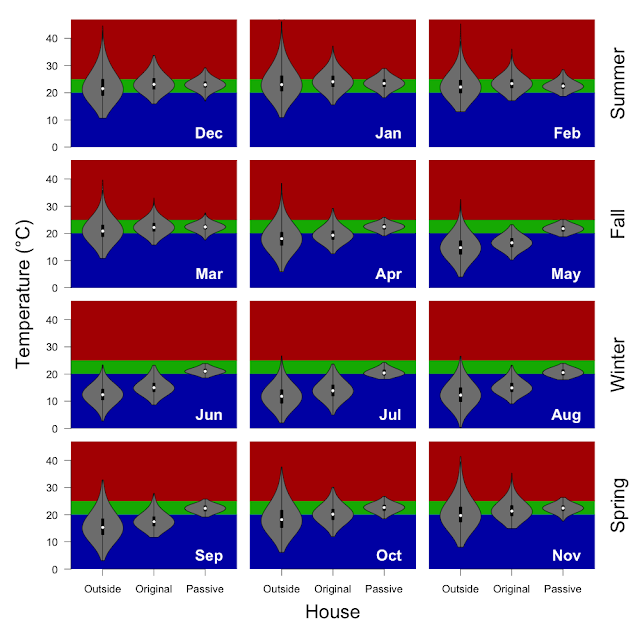2021 November (+ Spring)

New normal version 2.0 for November: kids in School and the parents working from home ~4 days per week. The split system was off for the entire month and the HRV slid in and out of 'cooling season' and neutral modes of operation more times that I could keep track of. The HRV did a great job of keeping the house in the comfort zone (if I could set the cooling season trigger in half degree increments we would have bit in range a bit more). It was an abnormally wet and cool November. Temperature from inside and outside the house as the percentage of hours in 0.5 °C bins. I've set the temperature range in hopes that they will be comparable across months. Methods: I have taken the 5 minutely data from the wirelessTag sensors and calculated the median temperature for each hour and determined the proportion of hours falling inside of the 20 - 25 °C target temperature (using the R functions 'aggregate' and 'hist'). Inside includes data from the wirelessTag sen...









